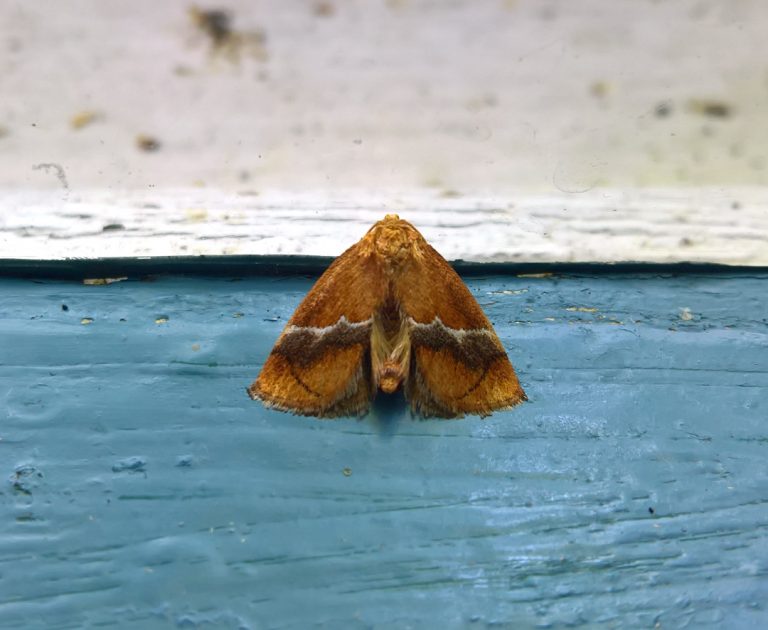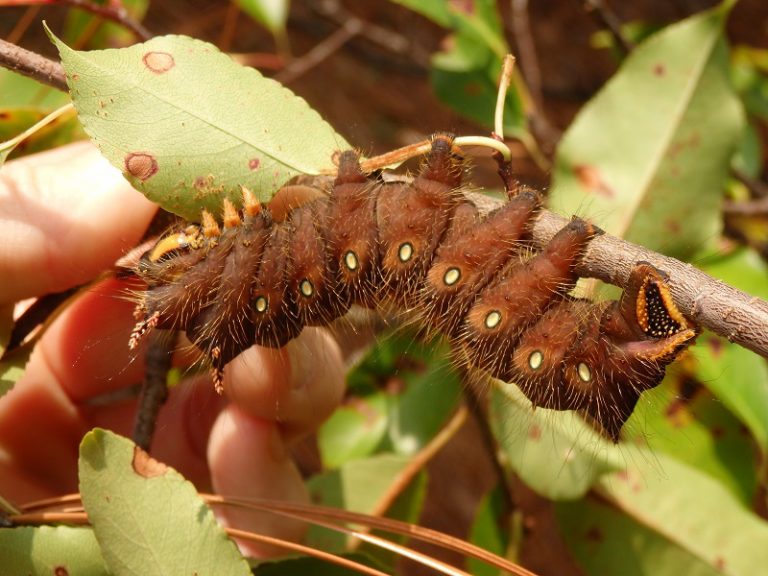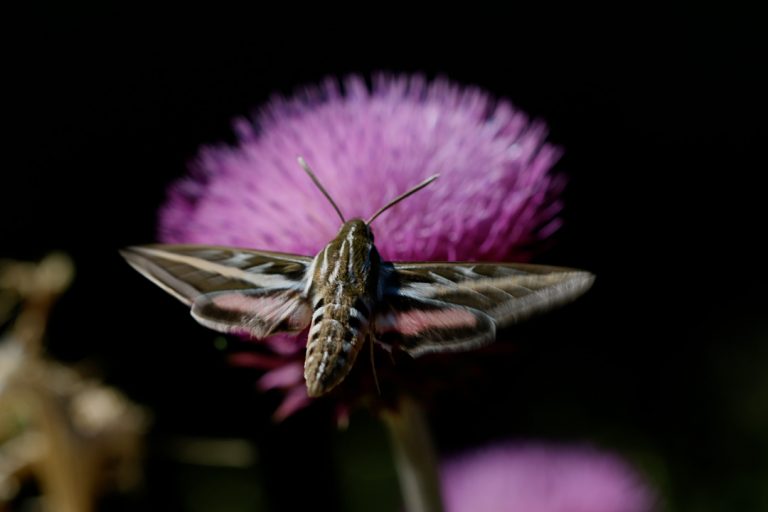Happy Moth Week! National Moth Week is the last full week in July and is a time to get outside – day or night – and appreciate these lesser celebrated Lepidoptera. In celebration of Moth Week we’re sharing the following excerpt from our book Gardening For Butterflies, which includes a chapter on moths and what you can do to attract and support them.
Few people take notice of moths, despite their close relationship with butterflies. Even fewer people intentionally create gardens for them. The muted colors of many species, along with the reputation of a tiny fraction of them as crop or wardrobe pests has done little to endear moths to the average gardener. But the truth is that moths are a beautiful and interesting wildlife group that anyone can attract to a garden.

Our relationship with moths and moth gardening is ancient. The domestication of the Asian mulberry silkmoth (Bombyx morii) likely began around 2600 B.C. According to legend, one day a wild silkworm cocoon fell from an overhead mulberry tree into the cup of tea held by the Chinese empress Leizu. Retrieving the warm, soaked cocoon, the empress realized she could carefully unwind the wet silk of the cocoon around her finger. Leizu recognized that a caterpillar was the source of this amazing material and went on to establish a grove of mulberry trees (and hence the world’s first moth garden) for silkworm cultivation. Today, more than 700,000 tons of silk are produced annually by silkworms, all of them still relying on the same kind of leaves first identified by empress Leizu.
Though your moth gardening aspirations might be more modest, with more than 11,000 moth species in North America, you are assured of infinite opportunities for fascinating observation. Perhaps equally valuable to many gardeners is the fact that moths are important sources of food for countless other animals such as bats, tree frogs, flying squirrels, songbirds, and even small owls.
Feeding Moths
Just as when gardening for butterflies, the moth gardener should consider the life cycle of moths and what they need to thrive. Fortunately, gardening for moths is not that dissimilar as gardening for butterflies, and they share many of the same needs including food, water, and shelter. One notable exception being that moth caterpillars feed on a somewhat more diverse range of foods than butterflies.

Like butterflies, the vast majority of moths feed on a host plant during their caterpillar stage. Rather than limiting themselves to leaves as most butterflies do, some moths also eat seeds or roots, or by boring into woody stems or branches, eat the plant from the inside. It should be noted that fewer than 1 percent of moth species eat fabrics such as wool.
A notable distinction between butterflies and moths in North America is the fact that some moths do not have functional mouths or digestive tracts as adults. These moths, which include the wild silkmoths, do all of their feeding as caterpillars, then emerge later as nonfeeding adults that live for only a few days before they mate and die.
Selecting Plants for Moths
Common wisdom has it that moths visit night-blooming plants with flowers that are typically white or pale in color such as sacred Datura (Datura wrightii), morning glory (Convolvulus spp.), and common evening primrose (Oenothera biennis). While there is certainly some truth in this, the relationship between moths and plants is far more complex. For moths that do not feed as adults, it is critical to recognize and protect their larval host plants. All moths that do feed as adults rely on sugar sources for food, primarily flower nectar but also tree sap or rotting fruit in some cases. Those active in daylight readily visit the same wildflowers you might already be planting for a butterfly garden. Like butterflies, nectar-feeding moths usually have longue tongues , allowing them to reach nectar located deep within showy tubular flowers.

The flower preferences of nocturnal or crepuscular (active at dawn and dusk) moths are less well understood. We know that these species are often extremely important pollinators of night-blooming plants since other pollinators such as bees are generally inactive at night.
In our book Gardening For Butterflies (pg. 234-237) we include regional plant lists for those species known to have a specific relationships with moths. In creating a moth-friendly garden, your focus should be on selecting as a foundation many of the native plants you would use to attract bees and butterflies. From there you should be sure to select any additional plants known to be important for specific moth groups you want to attract, and possibly include lots of those plants to increase the chances of seeing the moths you are interested in attracting to your garden.



